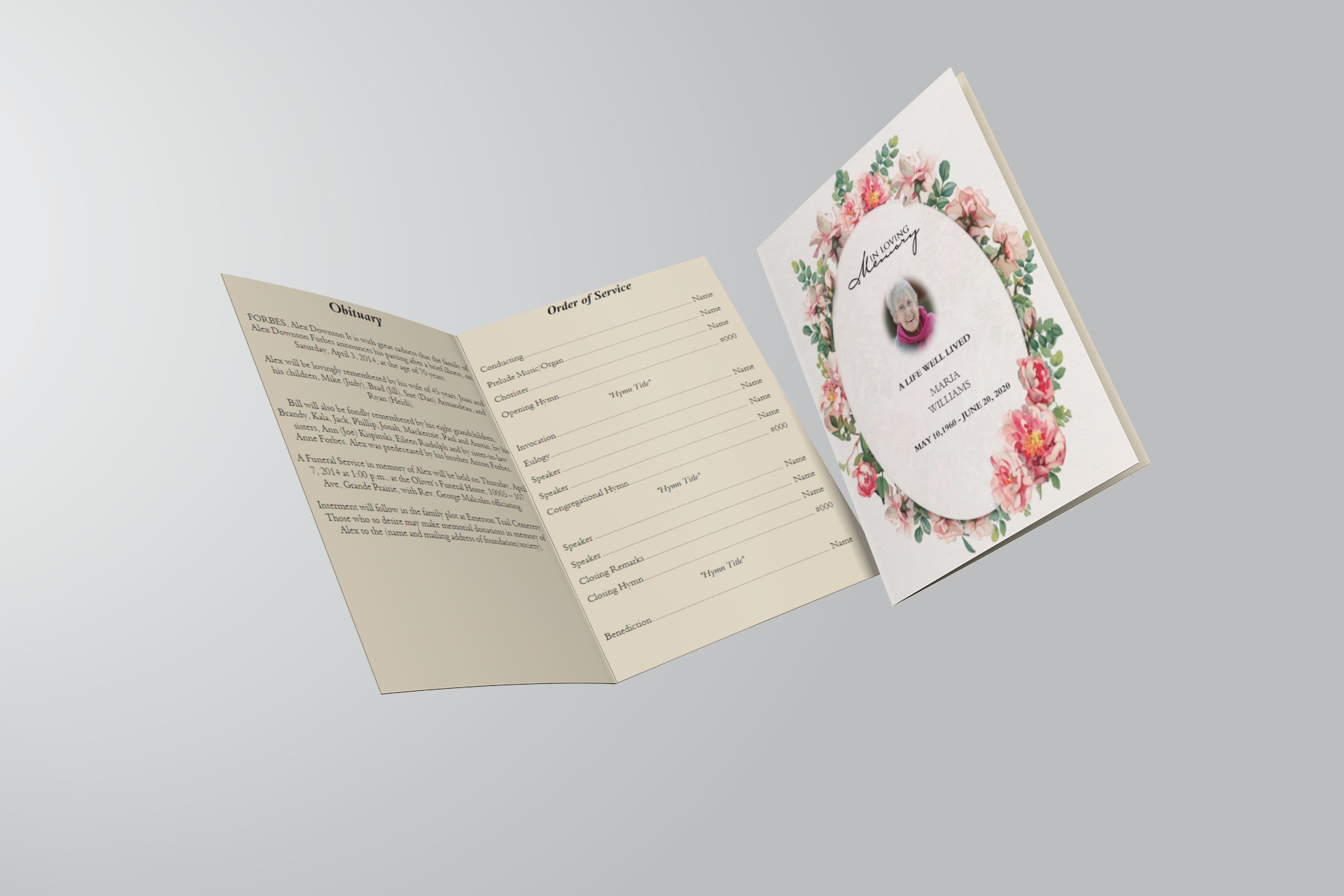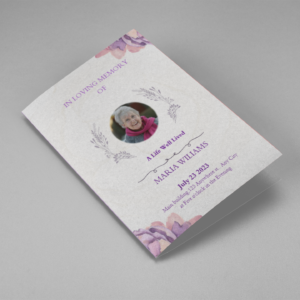Creating a funeral program is an essential part of planning a funeral or memorial service. A well-crafted funeral program serves as a tribute to the deceased, offering attendees a keepsake that honors the memory of their loved one. Here are some tips for creating a meaningful and professional funeral program.
Gather Essential Information
Before you start designing the funeral program, gather all the necessary information. This includes:
- Full name of the deceased
- Date of birth and date of death
- Date, time, and location of the service
- Officiant’s name
- Order of service
- Names of pallbearers
- Obituary or a short biography
- Special notes or acknowledgments
- Photos of the deceased
Having all this information at hand will help you create a comprehensive and accurate program.
Choose a Template
Using a template can save you time and ensure a professional look. There are many free and paid funeral program templates available online. Look for templates that match the tone and style you want for the service. Templates come in various designs, from simple and elegant to more elaborate ones with multiple pages.
Include a Cover Page
The cover page is the first thing attendees will see, so it should be attractive and respectful. Include a recent photograph of the deceased, their name, and the dates of birth and death. You can also add a short, meaningful quote or a piece of scripture that reflects the deceased’s life or beliefs.
Create the Order of Service
The order of service outlines the flow of the funeral or memorial service. This section typically includes:
- Opening remarks
- Prayers or readings
- Eulogies
- Musical selections
- Moments of silence
- Closing remarks
Be sure to list these events in the order they will occur. This helps attendees follow along and participate in the service.
Write a Thoughtful Obituary or Biography
Include a brief obituary or biography of the deceased. This section should highlight significant milestones, achievements, and personal anecdotes. Mention the deceased’s family members, including parents, siblings, spouse, children, and grandchildren. Be sure to proofread this section carefully to ensure accuracy and clarity.
Add Special Notes and Acknowledgments
It is common to include a section for special notes and acknowledgments. This can be used to thank those who have supported the family during this difficult time, including friends, relatives, and caregivers. You can also acknowledge any organizations or groups that were important to the deceased.
Incorporate Photos and Visuals
Adding photos and visuals can make the program more personal and engaging. Consider including:
- A cover photo
- A photo collage of memorable moments
- Images that relate to the deceased’s hobbies or interests
Ensure that the photos are of high quality and that you have permission to use them.
Choose the Right Fonts and Colors
The choice of fonts and colors can greatly impact the overall look and feel of the program. Opt for fonts that are easy to read and appropriate for the occasion. Classic fonts like Times New Roman, Arial, and Calibri are often suitable. When it comes to colors, stick to a palette that is respectful and serene, such as soft blues, greens, or grays.
Proofread and Review
Before printing the funeral program, proofread all the text to check for spelling and grammatical errors. It is also a good idea to have someone else review the program to catch any mistakes you might have missed. Ensure that all the information is accurate and that the design is consistent throughout.
Print and Distribute
Once you are satisfied with the program, print it on high-quality paper. Consider using a local print shop for professional results. Print enough copies to ensure all attendees receive one. Distribute the programs at the entrance of the service or place them on seats beforehand.
















